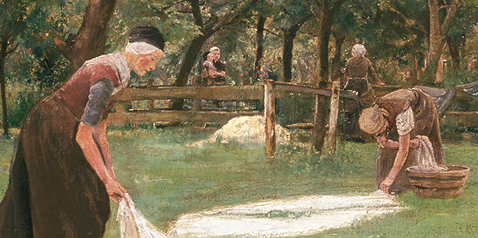
MAX LIEBERMANN
After finishing his artistic training in Weimar, Max Liebermann (Berlin 1847–1935 Berlin) went to various countries including France, which in the 1870s became his main place of residence. He was impressed by the art of Gustave Courbet, Charles-François Daubigny and Camille Corot, but it was the example of Jean-François Millet in particular that caused him to develop an interest not only in the simplicity and grandeur of nature but above all in images of the world of work. In the process, it was specifically Dutch motifs that soon came to the fore; from 1874 the artist often spent the summer months in the Netherlands. His naturalistic depictions of people at work testify to a particular effort to gain a new view of the everyday, to create a no-frills reproduction of reality – a view which Liebermann only moved away from after the turn of the twentieth century in favour of more fashionable themes. Impressionistic effects and the depiction of movement came more and more to the fore in his work. Liebermann now painted in paler colours, his brushwork was more ebullient, the individual strokes were looser and broader.
In Berlin, where Liebermann settled permanently in 1884, he was until 1911 President of the Berlin Secession, founded in 1898; from 1920 he was President of the Prussian Academy of Visual Arts, until the Nazis forced him out of office in 1933 (he was Jewish).


